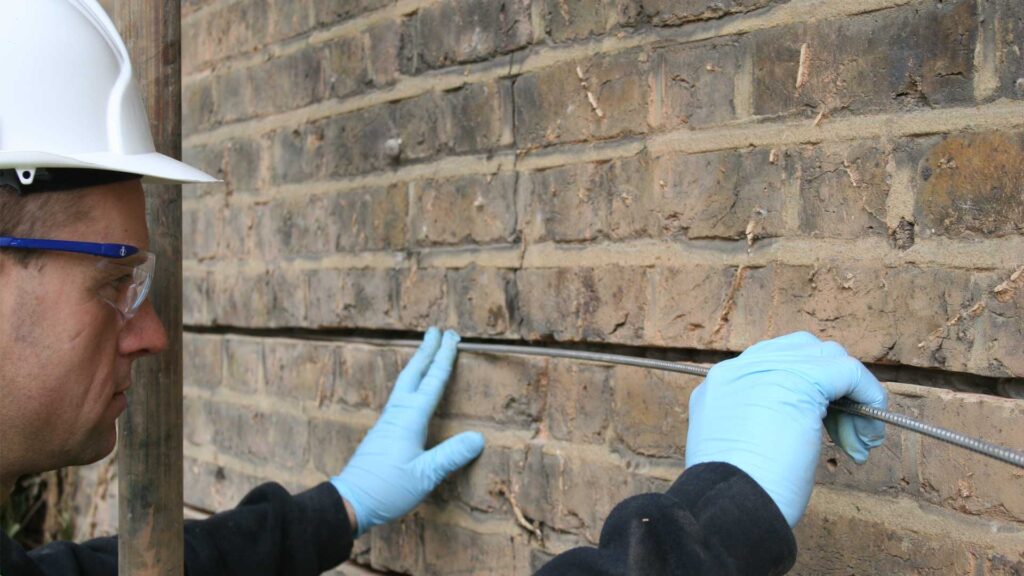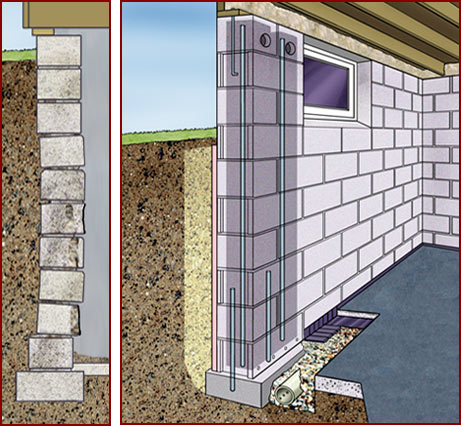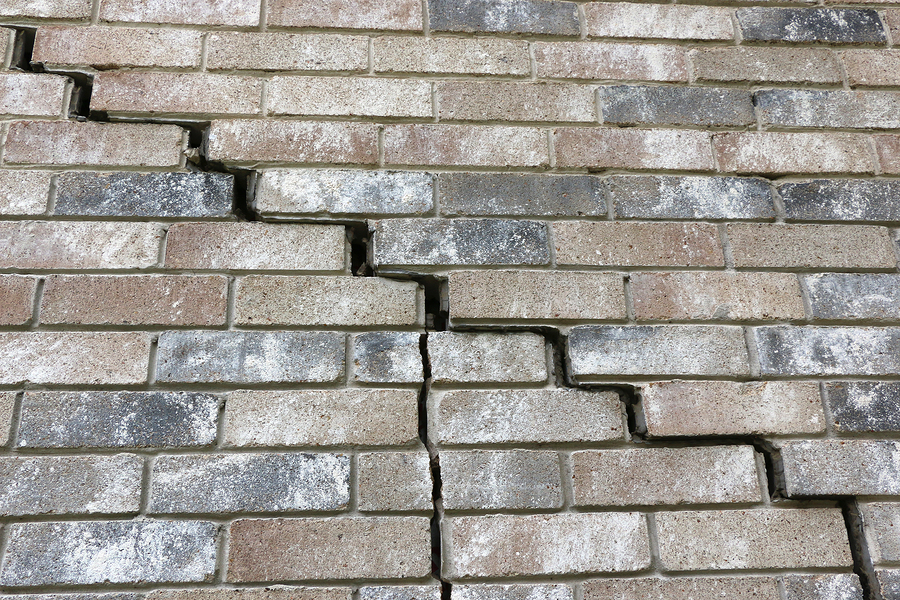
Settlement cracks are nearly always vertical, and they should not be confused with cracks that occur when a wall is subjected to lateral movement from soil pressure.
Structural Repairs , Bulging floors, cracked walls, and doors that won’t close are all signs of foundation distress. Sixty percent of all homes built on expansive soils suffer from foundation distress. The problem occurs when only part of the foundation heaves or settles, causing cracks and other damage.
This differential movement is largely caused by differences in soil moisture. Loss or gain of soil moisture can cause serious shrinkage or swelling.
If the frame of a house does not begin to distort until after three or more years of satisfactory performance, it is doubtful that the distortion is caused by full-depth foundation settlement, which is always evidenced by matching cracks. Cracks occur at each side of a portion of the foundation wall that is undergoing downward movement caused by soil bearing failure.
Structural and Foundation Repairs
Exterior Warning Signs
- Wall Rotation
- Separation around garage door, windows and/or walls
- Cracked bricks
- Broken and/or cracked foundation
- Displaced Moldings
Interior Warning Signs
- Misaligned Doors and Windows
- Cracked sheetrock
- Cracks in Floor

WHAT CAUSES FOUNDATIONS AND SLABS TO SINK?
Structural and Foundation Repairs Foundation settlement and movement can be caused by building on expansive clay, compressible or improperly compacted fill soils, or improper maintenance around foundations.
Whatever the cause, settlement can destroy the value of structures and even render them unsafe.
In any case, water is the basic culprit in the vast majority of expansive soil problems. Specific constituents of certain soils tend to swell or shrink with variations in moisture. The extent of this movement varies from soil to soil.
Those soils highest in clay content are generally more susceptible while those lowest in clay content are the least affected. In some areas the movement in insignificant; in others, it is quite pronounced.

Structural and Foundation Repairs ! When unstable soils are used as a base for a foundation, the tendency for movement is transmitted to the foundation. Since soil movement is rarely uniform, the foundation is subjected to a differential or upheaval. The problem shows up in both slab, and pier and beam type foundations.
If all the soil beneath a foundation or slab swells uniformly, there usually is no problem. Problems occur, however, when only part of the slab settles. Then, the differential movement causes cracks or other damages.
In residential properties, slab settlement problems can result in potential damage to the structure, potential accidents, and loss of real estate value. Poor drainage, tripping hazards, rough floors, unsightly cracks, and equipment malfunctions may also result from concrete slab settlement.
CONCRETE FOUNDATION REPAIR METHODS
Past techniques for Structural and Foundation Repairs or sunken concrete has varied. Wood, concrete, cement and steel have been poured, pushed, turned or somehow forced into the ground trying to salvage these foundations and slabs, while early on, anyone and everyone, trained or untrained, became “experts” at this type of repair. Often as not, the repairs proved to be futile.
Other, more successful, methods of remediation involve extensive disruption of the family or business using the building. Usually, it is desirable that settlement of building slabs and monolithic foundations in residential areas be corrected without having to move all furniture, appliances, and possibly the whole family, or in commercial areas, without disrupting business.
However, with todays technology and trained experts, there are a number of very successful solutions to the problem of sunken concrete that involve little or no disruption to normal living or business routine.

Structural and Foundation Repairs ! For larger problems, especially those found in house and commercial building foundation shifting, piering is typically used to lift and stabilize the foundation.
Piering involves the use of strategically placed mechanical jacks to lift the settled beam to grade. The beam must be raised carefully to avoid further or unnecessary damage. Once raised, the beam is held to elevation by a specially designed spread footing and pier.
The footing is set deep enough so that it will be independent of variations in soil moisture. It is also designed to adequately distribute the load without creating unnecessary bulk or mass. The pier is tied into the footing with steel and supports the foundation beam.
Structural and Foundation Repairs The two most common methods of this type of repair are slabjacking and hydraulic jacking (also known as piering).
In a operation, grout is pumped beneath a slab or beam to produce a lifting force that restores the member to its original elevation.
In piering steel posts are driven through unstable soil and hydraulic jacks are used to raise or stabilize concrete slabs affected by changes in the underlying soil. The repair method used depends on the type of distress being treated.
Choosing the Correct Method for Concrete Foundation Repair
Before deciding on a repair method, you must determine what is causing the distress. Examine moldings and trim boards, mortar joints in brick veneer, and windows in low areas for clues. Also take note of recent weather. Unusually dry or wet weather can cause problems in the underlying soil.
The most commonly used method of correcting smaller slabs of sunken concrete, such as residential slabs, driveways, sidewalks, swimming pool decks, etc. is slabjacking.
Slabing jacking is done by pumping a cement grout through small, strategically-located holes in the concrete slab. Once in place, the grout solidifies into a dense concrete mass and provides a competent bearing for the concrete slab.
If a soil-cement-lime grout is used, the lime content of the slurry will impart the benefits of lime stabilization to the base or sub-base. This combined treatment not only restores the slab to proper grade but also stabilizes the sub-soil to prevent re-occurrence of the problem.
